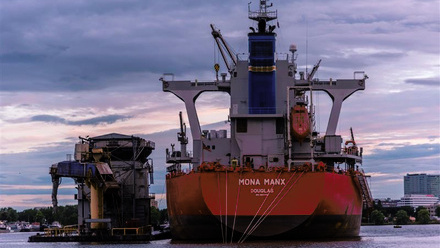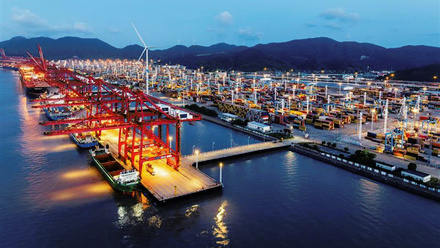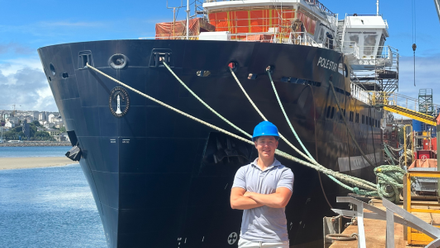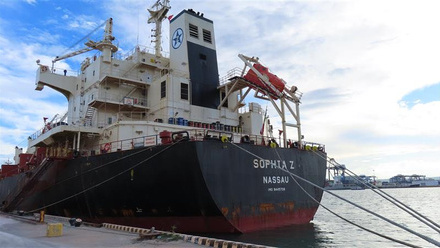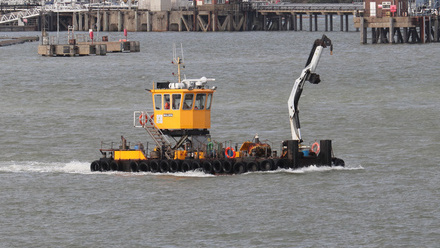Lessons learned at sea: safety insights from 2025
Over the course of the year, investigations from the Marine Accident Investigation Branch (MAIB) have helped seafarers, shore-side operators and ship owners improve their safety procedures.
In marine operations, safety is never a passive pursuit but requires constant top-down commitment throughout any organisation as demonstrated in MAIB’s safety digest which details cases of safety barrier breaches which have led to significant incidents.
Despite the finger-pointing that often follows a shipping incident, it is important to remember the vast majority of accidents are a “confluence of different factors, many of which are out of human control”, according to a recent IMarEST article.
In the aforementioned article, Chris Goldsworthy, IMarEST’s CEO, stated: “To attract people into the sector, then the immediate reaction when something goes wrong cannot be to point the finger at the ship’s team.
“The reality is that there are always many factors at work when there’s an incident, and we commonly refer to this as the Swiss cheese model, with many barriers as fail safes which all must be breached for an incident to occur, and not all of these are always on the ships.”
The cases highlighted in the most recent safety digest from MAIB reaffirm that robust procedures, clear communication, and risk awareness must not be treated as isolated acts of diligence, but maintained organisation-wide through top-down commitment.
‘Every day is a school day’: grounding of a bulk carrier
A bulk carrier under pilotage grounded while approaching its berth, despite apparently being well within the marked channel and enjoying generous under-keel clearance. Post-incident surveys revealed that a new sandbank had formed due to riverbed migration, extending far beyond its previously charted position.
Lesson: The incident underscores the limitations of static hydrographic data in dynamic river systems.
Even though the crew and pilot did everything right, the case illustrated that it was the ECDIS (Electronic Chart Display and Information System) data that proved fallible. While a computer readout can show what appears to be trustworthy granular data, it should be borne in mind that these technologies rely on inputs of data which are only truly correct at the time when it was collected, and paper charts, in this case, clearly would not add a further layer of information.
Subsequently, authorities made a plan to install CCTV to survey and track tidal patterns. It is a reminder that risk management must adapt dynamically to environmental conditions.
‘Is your battery safe?’: explosion on a barge
In float charging, continuous low-level current is supplied to offset discharge. The lead-acid batteries in this case, however, were not suitable for such a system and failed in service to cause an explosion on board a barge. Fortunately, the blast was contained within a battery locker, and though the equipment was damaged, no one was hurt.
Lesson: A failure in lifecycle management. The wet cell VRLA (valve regulated lead acid) batteries had been used for more than five years despite the recommendation of replacing them every two years and were also unsuitable for the float charging system.
This event highlights the need for a comprehensive battery inventory and inspection schedules, with oversight that distinguishes between battery types and expected service life.
‘Out of sight, out of mind’: fatal accident on a freight ferry
A bosun was fatally crushed between a semi-trailer and a structural protrusion while directing vehicles onto a ferry. The accident unfolded during an ordinary loading sequence, with the investigation highlighting the need to be wary of standing in the path of moving vehicles and being aware of potential blind spots.
Lesson: The tragedy reflects a failure of procedural enforcement, with the report commenting: “There was no proper procedure for loading high-risk corner spaces.” It concluded that two deckhands, who were assisting, were focused on loading the cargo quickly instead of monitoring the bosun – which was against procedure of teamwork and being “in sight of each other”.
The incident called for a re-evaluation of procedures and how they are implemented in real-world conditions, with frontline staff being involved in the process.
‘A concrete result’: rollover of a cement truck on a ferry
While crossing a short stretch of water in calm conditions, a ferry encountered a strong flood tide with an opposing wind. This caused a ready-mix cement truck to tip over and crush a neighbouring pickup. During the trip and despite the requests of the crew, the driver continued to run the loaded drum, causing a shift in its centre of gravity and for it to roll over onto the pickup truck. Thankfully, those in the truck escaped unharmed.
Lesson: Even though crew recognised the risk and made a verbal request, there was no formalised protocol requiring the drum to be stopped or the vehicle to be lashed. After the incidents, changes were made to involve lashing of cement trucks, and to prevent their positioning next to other vehicles.
Words from the wise
In MAIB’s safety digest, Gary Doyle, Group Harbour Master at Peel Ports Group, summarised what he learned from years in the Fleet Air Arm [Royal Navy] in terms of a ‘no blame culture’ and how it should apply moving forward.
“Living and working in the marine industry is an experience unlike any other, demanding respect, discipline and adaptability as situations can switch from calm to unpredictable danger in a moment,” he concluded.
“Our focus as harbour masters is to ensure we have the correct procedures and safety culture, with appropriately trained teams to manage day-to-day marine operations safely and respond effectively to an unexpected event or crisis. I have tried to stick to the following principles that have developed over the years: respect for the procedures; awareness and teamwork; preparation and training; and mental resilience.
“Also, remembering that just because a good plan did not work out did not make it a bad plan – stuff happens, it is how we react that matters!”
Tell us what you think about this article by joining the discussion on IMarEST Connect.
Image: lessons can be learned from a grounded ship. Credit: Shutterstock.

